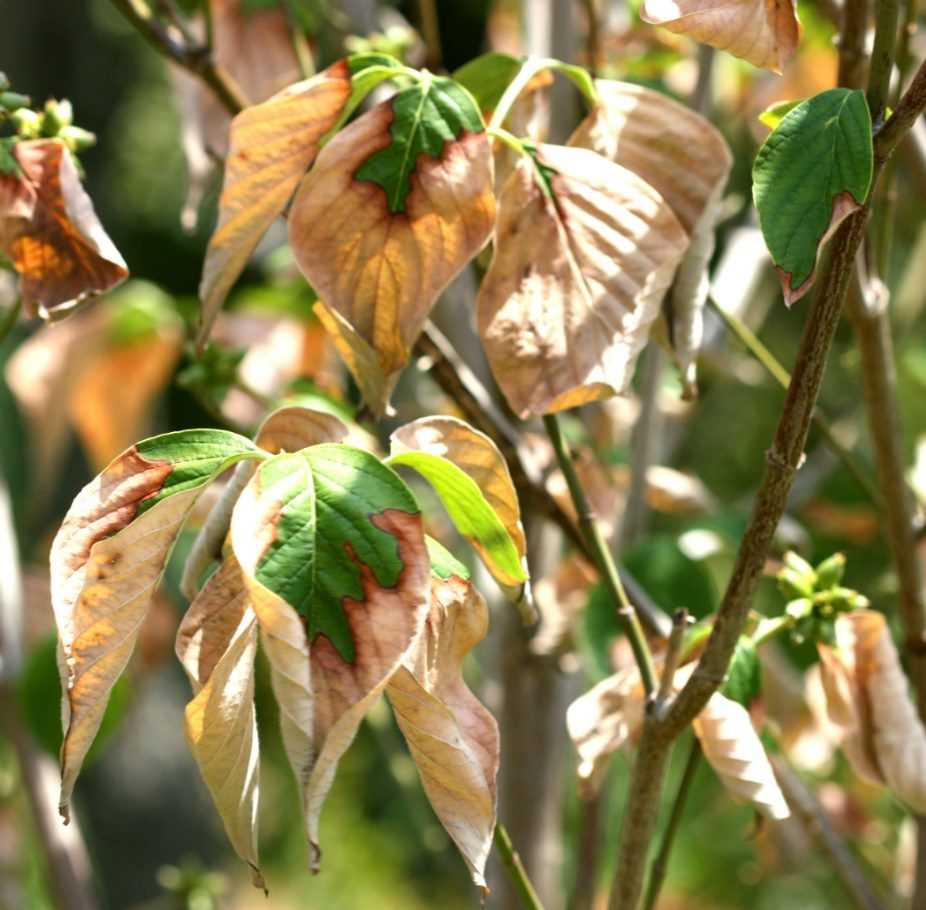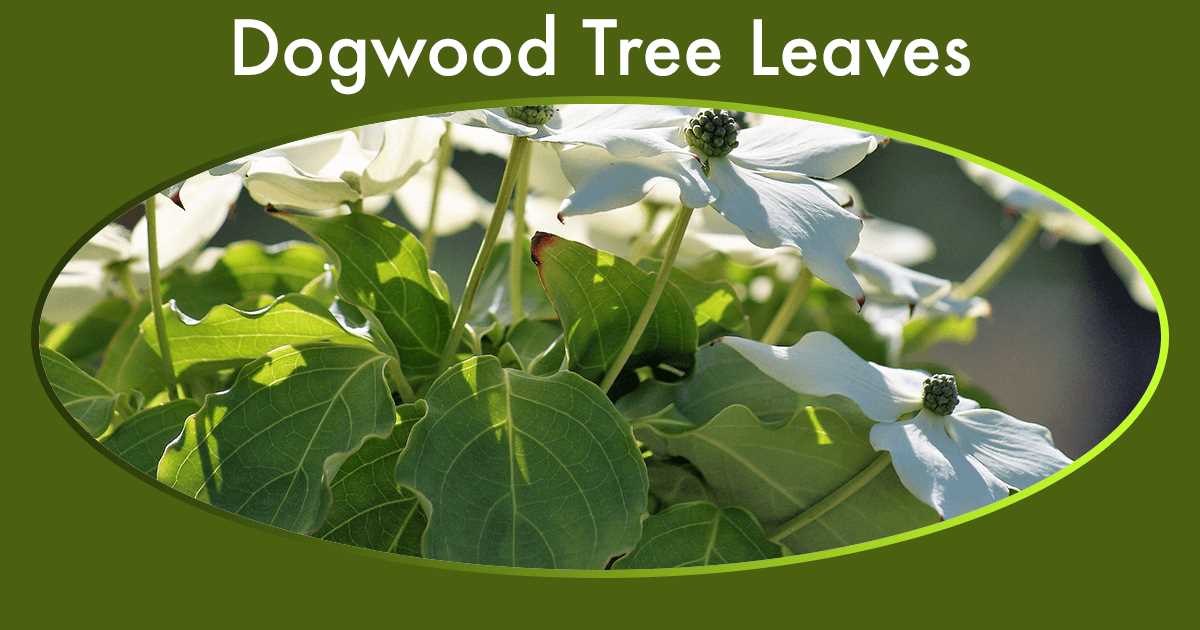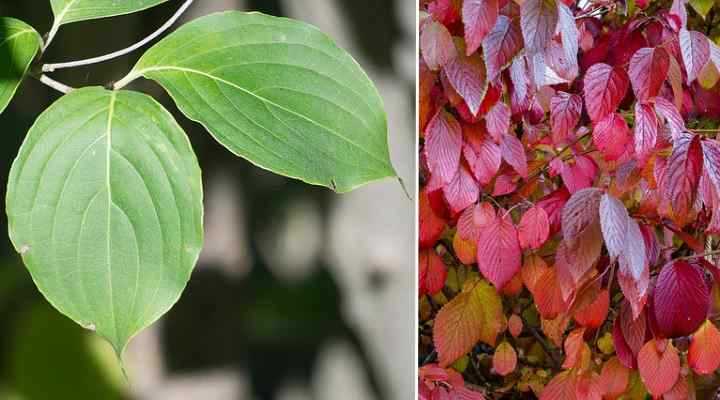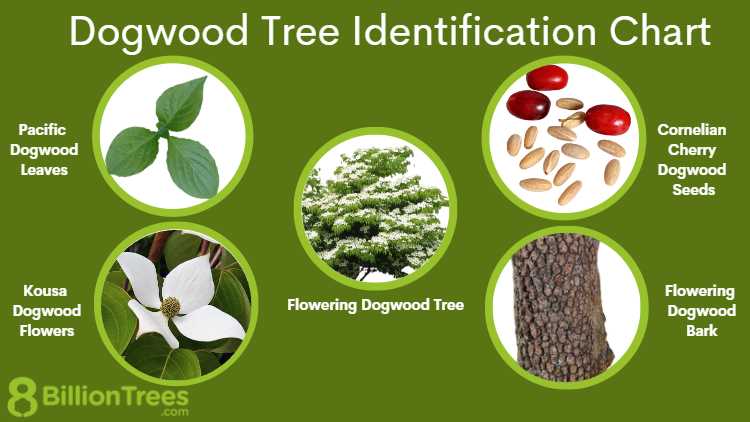Contents
- 1 Expert Guide: Everything You Should Know About Dogwood Tree Leaves, from Identification to Care Tips
Expert Guide: Everything You Should Know About Dogwood Tree Leaves, from Identification to Care Tips

Dogwood trees are known for their beautiful flowers, but their leaves are equally fascinating. The leaves of a dogwood tree are deciduous, meaning they change color and fall off in the autumn. They are typically oval or elliptical in shape, with smooth edges and a pointed tip. The leaves are arranged in an opposite pattern along the branches, creating a symmetrical look.
One of the most distinctive features of dogwood tree leaves is their vibrant color. In the spring and summer, the leaves are a rich green shade, providing a lush backdrop for the tree’s flowers. As the seasons change, the leaves transition to shades of red, orange, and purple, creating a stunning display of autumn colors.
The leaves of a dogwood tree also play an important role in the tree’s overall health and growth. They are responsible for photosynthesis, the process by which plants convert sunlight into energy. The leaves absorb sunlight and carbon dioxide, and through photosynthesis, produce oxygen and glucose. This process is essential for the tree’s survival and growth.
In addition to their role in photosynthesis, dogwood tree leaves also provide protection for the tree. They help to regulate the tree’s temperature by providing shade and reducing water loss through transpiration. The leaves also act as a barrier, protecting the tree from pests and diseases.
So, next time you admire the beautiful flowers and blooms of a dogwood tree, take a moment to appreciate its leaves as well. They are not just a backdrop for the tree’s flowers, but an integral part of its overall health and beauty.
All You Need to Know About Dogwood Tree Leaves

Dogwood trees are known for their beautiful foliage, which adds color and interest to any landscape. The leaves of a dogwood tree are one of its most distinctive features.
The leaves of a dogwood tree are deciduous, meaning they fall off the tree in the winter and regrow in the spring. They are typically oval or elliptical in shape, with smooth edges and a pointed tip. The leaves are arranged in an opposite pattern on the branches, meaning that they grow in pairs directly across from each other.
The color of dogwood tree leaves can vary depending on the species and the time of year. In the spring and summer, the leaves are typically a vibrant green color. As fall approaches, the leaves may turn shades of red, orange, or purple, adding a burst of color to the landscape.
In addition to their color, dogwood tree leaves also have a unique veining pattern. The veins of the leaves are curving and parallel, giving them an elegant and intricate appearance.
While the leaves of a dogwood tree are beautiful, they also serve an important purpose. The leaves help the tree to photosynthesize, which is the process by which plants convert sunlight into energy. The leaves also help to regulate the temperature of the tree, providing shade and reducing water loss through evaporation.
It’s important to note that not all dogwood tree leaves are the same. There are several different species of dogwood trees, and each species has its own unique leaf characteristics. Some species have variegated leaves, meaning that they have multiple colors or patterns on the leaves. Others have lobed leaves, which have deep indentations or divisions.
In addition to their leaves, dogwood trees also have other distinctive features. They produce small, round fruit that is typically bright red or orange in color. The bark of a dogwood tree is smooth and gray, with shallow ridges and furrows. The branches of a dogwood tree are typically slender and spread out in a graceful, arching pattern.
In conclusion, dogwood tree leaves are a beautiful and important part of the tree’s overall appearance. They provide color, shade, and energy for the tree, and their unique characteristics make them a standout feature in any landscape.
Understanding Dogwood Tree Leaves

The leaves of a dogwood tree are an important feature that helps to identify and understand this beautiful tree species. They play a vital role in the overall health and growth of the tree.
Here are some key points to help you understand dogwood tree leaves:
- Shape: Dogwood tree leaves are typically ovate or elliptical in shape, with a pointed tip and a smooth margin.
- Size: The size of dogwood tree leaves can vary, but they are usually around 2 to 5 inches long.
- Color: In spring and summer, dogwood tree leaves are a vibrant green color. In autumn, they often turn shades of red, orange, and purple.
- Veins: The veins on dogwood tree leaves are prominent and usually curve towards the leaf margin.
- Arrangement: Dogwood tree leaves are arranged in an opposite pattern along the branches, meaning that each leaf is positioned directly across from another leaf.
Understanding the characteristics of dogwood tree leaves can help you identify this tree species in the wild or in your own backyard. It can also provide insights into the overall health and condition of the tree.
Next time you admire the beautiful flowers, bark, and fruit of a dogwood tree, take a moment to appreciate the role that its leaves play in the tree’s overall beauty and vitality.
Anatomy of Dogwood Tree Leaves

The leaves of a dogwood tree are an essential part of its overall structure and function. They play a vital role in the tree’s ability to photosynthesize, produce energy, and provide shade and protection for the tree’s branches, blooms, and fruit.
Leaves: The leaves of a dogwood tree are typically large, broad, and oval-shaped. They are attached to the branches by a thin stem called a petiole. The leaves have a smooth and glossy texture, and their color can vary depending on the specific species of dogwood tree.
Branches: The branches of a dogwood tree extend outward from the trunk and support the leaves, blooms, and fruit. They are made up of woody tissue and are covered in bark, which protects the inner layers of the branch from damage and disease.
Dogwood: The dogwood tree is a deciduous tree that belongs to the Cornaceae family. It is known for its beautiful spring blooms and vibrant fall foliage. Dogwood trees can vary in size, with some reaching heights of up to 30 feet.
Blooms: Dogwood tree blooms are one of their most distinctive features. They typically appear in the spring and can range in color from white to pink or even red. The blooms are made up of small, four-petaled flowers that cluster together to form a larger, showy display.
Fruit: After the blooms fade, the dogwood tree produces small, round fruit. These fruit are typically red or orange and are enjoyed by birds and other wildlife. The fruit is not typically consumed by humans, but it can add visual interest to the tree and attract wildlife to the area.
Tree: The dogwood tree is a perennial plant that can live for many years. It has a strong and sturdy trunk that supports the weight of the branches and provides stability for the entire tree. The trunk is covered in bark, which helps to protect the inner layers of the tree from damage and disease.
In conclusion, the leaves of a dogwood tree are an important part of its overall anatomy. They provide shade, protection, and energy production for the tree, and their size, shape, and color can vary depending on the specific species of dogwood tree.
Varieties of Dogwood Tree Leaves

Dogwood trees are known for their beautiful flowers and vibrant fruits, but their leaves are also a noteworthy feature. The leaves of different dogwood tree varieties vary in shape, size, and color, adding to the overall aesthetic appeal of these trees.
Here are some common varieties of dogwood tree leaves:
- Variegated Leaves: Some dogwood tree varieties have leaves with variegated patterns. These leaves display a combination of different colors, such as green, white, and pink, creating a striking visual effect.
- Oval Leaves: Many dogwood trees have oval-shaped leaves. These leaves are smooth, with a pointed tip and a slightly rounded base. They are typically green in color and provide a lush backdrop for the tree’s flowers and fruits.
- Red Leaves: Certain dogwood tree varieties have leaves that turn red in the fall. These leaves add a splash of vibrant color to the landscape, making the tree stand out during the autumn season.
- Heart-Shaped Leaves: Some dogwood trees have leaves that are heart-shaped. These leaves have a distinct pointed tip and a rounded base, resembling the shape of a heart. They often have a glossy texture and a deep green color.
- Variegated Red Leaves: A few dogwood tree varieties have leaves that are not only red but also variegated. These leaves feature a mix of red, pink, and white tones, creating a captivating display of colors.
Regardless of the variety, dogwood tree leaves are typically arranged in an opposite pattern along the branches. This means that each pair of leaves grows directly across from each other on the branch, creating a symmetrical appearance. The leaves are attached to the branches by petioles, which are slender stalks that connect the leaf to the branch.
Understanding the different varieties of dogwood tree leaves can help you appreciate the unique characteristics of each tree. Whether you’re drawn to variegated leaves, red foliage, or heart-shaped leaves, there is a dogwood tree variety to suit your preferences.
Caring for Dogwood Tree Leaves

When it comes to caring for dogwood tree leaves, there are a few important factors to consider. Dogwood trees are known for their beautiful flowers, fruit, and branches, but it’s important not to neglect the health of their leaves. The leaves of a dogwood tree play a crucial role in the overall health and vitality of the tree.
Watering: Proper watering is essential for maintaining healthy dogwood tree leaves. Dogwood trees prefer moist, well-drained soil. It’s important to water the tree regularly, especially during dry periods. Avoid over-watering, as this can lead to root rot and other issues.
Fertilizing: Fertilizing can help promote healthy leaf growth in dogwood trees. Use a balanced fertilizer that is specifically formulated for trees and follow the instructions on the package. Apply the fertilizer in the early spring before the tree begins to bloom.
Pruning: Regular pruning can help maintain the health and appearance of dogwood tree leaves. Prune any dead or damaged branches to encourage new growth. It’s also important to prune any branches that are crossing or rubbing against each other, as this can lead to disease and insect infestation.
Protecting from pests and diseases: Dogwood trees can be susceptible to a variety of pests and diseases that can damage the leaves. Regularly inspect the tree for any signs of pests or diseases, such as leaf spots or powdery mildew. If necessary, treat the tree with an appropriate pesticide or fungicide.
Monitoring for signs of stress: Keep an eye out for any signs of stress in the dogwood tree leaves. This can include wilting, discoloration, or curling of the leaves. Stress can be caused by a variety of factors, including lack of water, nutrient deficiencies, or pest infestation. Address any issues promptly to prevent further damage to the leaves and overall health of the tree.
In conclusion, caring for dogwood tree leaves is an important part of maintaining the overall health and beauty of the tree. By following these tips for watering, fertilizing, pruning, protecting from pests and diseases, and monitoring for signs of stress, you can help ensure that your dogwood tree leaves remain vibrant and healthy.
Watering Dogwood Tree Leaves

Proper watering is essential for the health and vitality of dogwood tree leaves. The roots of the tree absorb water and nutrients from the soil and distribute them to the leaves through the trunk and branches. Without enough water, the leaves can become dehydrated and wilted, which can lead to stress and damage to the tree.
It is important to water dogwood trees regularly, especially during dry periods or when the weather is hot. The frequency and amount of water needed will depend on factors such as the age of the tree, the soil type, and the weather conditions. Generally, dogwood trees require about 1-2 inches of water per week, either from rainfall or manual watering.
When watering dogwood tree leaves, it is best to water deeply and thoroughly. This means applying water slowly and evenly to the root zone, which is located around the drip line of the tree. Avoid watering the trunk or bark directly, as this can lead to rot and other problems.
Using a soaker hose or a drip irrigation system is a good way to ensure that the water is delivered directly to the root zone without wasting it. These methods also help to prevent moisture from accumulating on the leaves, which can increase the risk of fungal diseases.
During the first year after planting a dogwood tree, it is especially important to monitor the soil moisture and water accordingly. The root system of a young tree is still developing, and it may not be able to access water deep in the soil. Mulching around the base of the tree can help retain moisture and regulate soil temperature.
In summary, watering dogwood tree leaves is crucial for their health and vitality. Remember to water deeply and thoroughly, focusing on the root zone rather than the trunk or bark. Use a soaker hose or drip irrigation system for efficient watering, and monitor the soil moisture especially during the first year after planting.
Video:Expert Guide: Everything You Should Know About Dogwood Tree Leaves, from Identification to Care Tips
Pruning a dogwood tree
How to grow White Dogwoods – Cornus florida – White Flowering Native to the Eastern US
Hello, I am Beverly J. Sanders, the voice behind the diverse articles you come across on styves.co.za. My passion lies in exploring the nuances of home improvement and sharing tips that can help you transform your living space into a haven of comfort and style. From the latest trends in home decor to practical cleaning advice, I cover a broad spectrum of topics to cater to a wide variety of interests.
In my recent works, I have delved into the advantages of incorporating a horizontal Murphy bed into your home to save space without compromising on design and functionality. I also explored the benefits of having a free-standing electric fireplace that not only adds warmth to your home but also brings a sleek and modern design to any living space. My articles are a rich resource, offering insights into different products and home improvement strategies that can enhance the quality of your life.
I believe in the power of details; a belief that reflects in my comprehensive guides where I discuss even the overlooked aspects of home decor, such as the impact of baseboard trim in enhancing the overall look and feel of your home. I am constantly on the lookout for innovative solutions and products that can add value to your home and life.
Join me in my exploration as I continue to bring you the latest trends, tips, and insights in the home improvement world. Let’s create a home that is not just a place to live, but a reflection of style and personality.